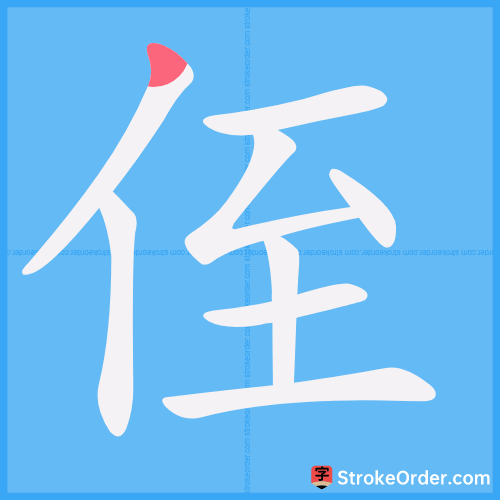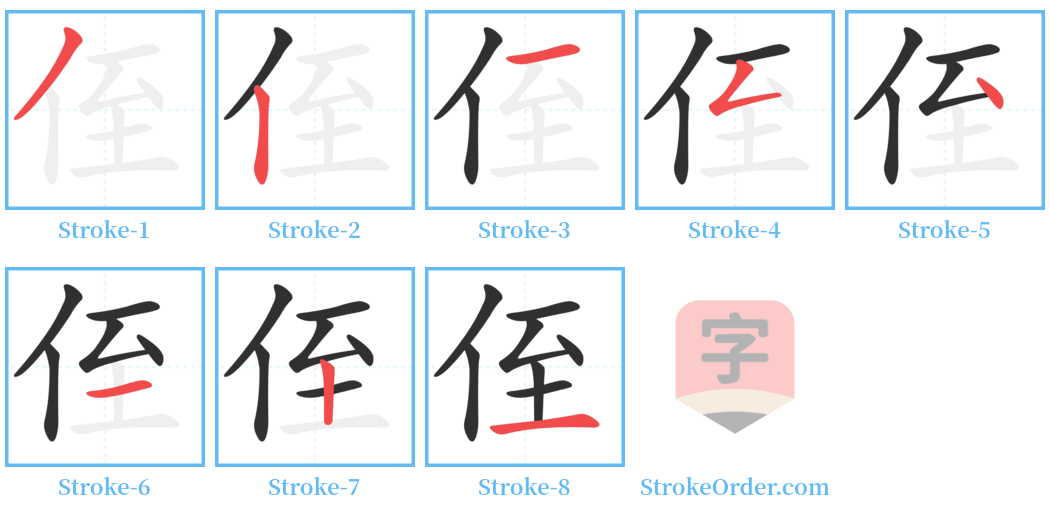侄 Stroke Order
Animated Stroke Order of 侄

Stroke Order Diagrams for 侄

Step-by-Step Handwriting Guide for 侄

Learn to Write Chinese Characters with Video Tutorials
Watch the video of writing the Chinese character "侄", learn the correct stroke order (笔顺) of the character "侄", and master the standard way of writing the character "侄".
Free Printable Handwriting Practice with Stroke Order: 侄
Printable Writing Practice Worksheet of "侄" in Portrait Orientation (Tian Zi Ge)

Printable Writing Practice Worksheet of "侄" in Landscape Orientation (Tian Zi Ge)

Information of 侄
Pinyin
zhí
Radical
亻
Strokes
8 strokes
Usage
★★★★★
Definition
nephew, nephew (of the same surname)
侄
1. Nephew; the son of one's brother or male relatives of the same generation.
侄的定义是:弟兄的儿子,同辈男性亲友的儿子。
2. (侄为姪的俗字)弟兄或其他同辈男性亲属的子女.
(Zhí is a colloquial form of 姪) refers to the children of brothers or other male relatives of the same generation.
3. Examples: 侄儿 (nephew); 侄女 (niece); 叔侄 (uncle and nephew); 子侄辈 (the generation of sons and nephews); 侄孙 (great-nephew).
4. Historical references:
- 《说文》: 姪,兄之女也。从女,至声。
(Explains the character's origin: neice, daughter of a brother).
- 《尔雅》: 女子谓兄弟之子为姪。
(Argues that women refer to their brothers' sons as 姪).
- 《仪礼·丧服传》: 谓吾姑者,吾谓之姪。
(Refers to calling one's aunt's children nieces and nephews).
- 《礼记·曲礼》: 大夫不名世臣姪娣。
(Mentions that the son of one's wife’s brother is referred to as 姪).
- Other literary references from 《左传》 and 《国语》 discussing how the term relates to the family structure.
5. Usage examples:
侄少爷 (respectful term for nephew in the past);
侄儿 (nephew);
侄儿子 (further reference to nephew);
侄哥 (endearing term for nephew);
表侄 (paternal nephew);
内侄 (maternal nephew);
世侄 (generational nephew).
Input Method for 侄
Pinyin
zhi2
Wubi
wgcf
Cangjie
omig
Zhengma
nhb
Four Corner
21214
Unicode
U+4f84
Same Pronunciation Characters